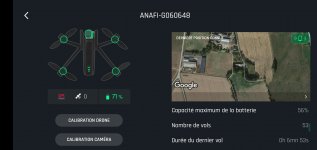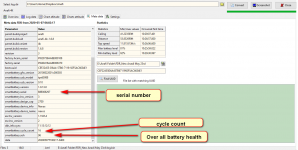MustangPhil
Well-known member
In the video Solaris made, there is a clear voltage difference between the two individual cells.
It looks like ‘a faulty battery’ could be detected when the ‘balance’ between both cells is measured more than 0,01 v (At least at 10% remaining charge).
With the faulty battery, the difference in the video is more than 0,03V at 30%, compared to the new set of cells that only display a difference of 0,006V in the end (10%).
Not sure it could help, because this analysis must be done with the Anafi in flight, but a surveillance of this parameter that should be displayed at the end of flights or as a ‘battery health’ indicator in the summary page...
I hope someone will find LiPo cells compatible with the Anafi soon (I’m ready to dismount my 6 packs to rebuilt reliable ones)...
It looks like ‘a faulty battery’ could be detected when the ‘balance’ between both cells is measured more than 0,01 v (At least at 10% remaining charge).
With the faulty battery, the difference in the video is more than 0,03V at 30%, compared to the new set of cells that only display a difference of 0,006V in the end (10%).
Not sure it could help, because this analysis must be done with the Anafi in flight, but a surveillance of this parameter that should be displayed at the end of flights or as a ‘battery health’ indicator in the summary page...
I hope someone will find LiPo cells compatible with the Anafi soon (I’m ready to dismount my 6 packs to rebuilt reliable ones)...





